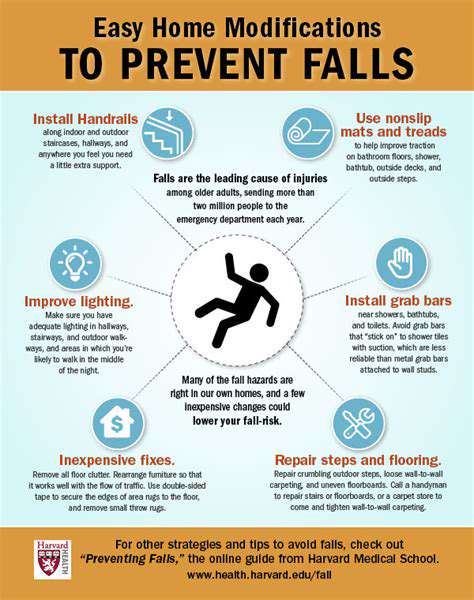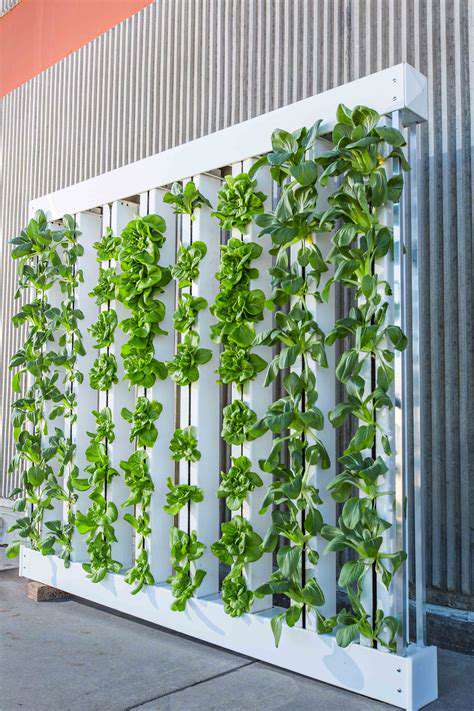How to Create a Safe Home Environment for Toddlers

Safety Gates
Safety gates are a crucial element in childproofing any home, especially if you have stairs or areas you want to restrict access to. They come in various styles, from traditional pressure-mounted gates to more modern, sleek designs. Choosing the right gate depends on the specific area you need to secure. Consider the height and width of the opening, as well as the materials and construction, ensuring it's sturdy enough to prevent a child from forcing it open.
Installing safety gates properly is just as important as choosing the right one. Follow the manufacturer's instructions carefully to guarantee the gate's effectiveness and child safety. Regular checks for wear and tear, and adjustments as needed, are essential for maintaining the gate's safety function.
Electrical Outlets
Electrical outlets are a significant safety hazard for young children. Protecting them involves more than just covering the outlets, although that's a good first step. Installing outlet covers is a simple and effective way to prevent curious fingers from reaching inside. Look for childproof outlet covers that are specifically designed to provide a secure and reliable barrier against potential shocks or accidents.
Beyond outlet covers, consider using power strips with built-in safety features. This will prevent accidental shocks or electrical hazards, and provide a helpful way to control the number of electrical devices plugged into any one area.
Cabinet Locks
Cabinets containing cleaning supplies, medications, or other potentially harmful items are a significant safety concern. Using cabinet locks is a simple way to prevent access to these items. Choosing locks that are child-resistant and difficult for young children to open is essential. Look for locks that have a strong latching mechanism to guarantee the safety and security of your home environment.
Storing hazardous materials, like cleaning products or medications, in high cabinets and using childproof latches is also an important part of childproofing your home. This creates a barrier that helps to prevent potential accidents.
Window Safety
Windows are another area needing careful consideration. To prevent falls, consider window guards or films to restrict access. Window guards are a great solution for added safety, particularly if you have windows on multiple floors. Window films, while not as effective at preventing access, can help in reducing the risk of falls.
Regularly inspect window locks and latches to ensure they are functioning properly. This helps to maintain the security and safety of your home environment.
Furniture Anchoring
Heavy furniture, like bookshelves or dressers, can easily tip over if not properly anchored. Using wall anchors or straps can prevent these accidents. By securing furniture to the wall, you significantly reduce the risk of a child or an adult being injured by an unexpected tip-over. This is a crucial step in creating a safe and stable home environment.
This simple step can significantly reduce the risk of serious injuries. It's an inexpensive measure that can provide peace of mind for every family member.
Poison Control
Educating children about the dangers of household chemicals and medications is an important aspect of preventing poisoning incidents. Storing all potentially hazardous materials in locked cabinets, and ensuring they are well out of reach, is a crucial step. Labeling these items with clear warnings is also essential, highlighting their potential dangers.
Keeping a readily available list of poison control numbers in a visible location is a good practice. This will allow for quick access in the event of a potential poisoning incident.
Protecting Your Little Explorer: Preventing Falls and Injuries

Ensuring Safety at Home
Creating a safe environment for your child is paramount. This involves proactive measures to mitigate potential hazards within the home, such as securing cabinets containing cleaning supplies and medications, and covering electrical outlets. Furthermore, placing furniture strategically to prevent falls and ensuring stairways are equipped with appropriate safety gates are crucial steps in safeguarding your little explorer.
Importance of Supervision
Constant vigilance is essential, particularly when your child is engaging in activities that might pose risks. Close supervision, especially in areas like the kitchen or bathroom, is critical in preventing accidents. Children require constant guidance to understand potential dangers and how to react safely in various situations.
Outdoor Safety Precautions
Protecting your child from outdoor hazards is equally vital. This includes using sunscreen and protective clothing to prevent sunburn, teaching them about traffic safety, and ensuring they are wearing appropriate helmets when participating in activities like cycling or skateboarding. The potential for harm outside the home demands continuous awareness and proactive safety measures.
Promoting Safe Play Habits
Encouraging safe play habits is key to preventing injuries. This includes teaching children about the importance of not playing with matches, lighters, or other fire hazards. Instilling these safety rules from a young age can significantly reduce the risk of accidents. Learning to share, take turns, and negotiate during playdates is also a crucial part of developing safety awareness.
Importance of Water Safety
Water safety is a critical aspect of child safety. Children should be taught about the dangers of swimming alone and instructed on proper swimming techniques. Regular swimming lessons, while incredibly valuable, should not replace constant adult supervision around water. This includes clear rules about never entering the water unsupervised and the importance of life vests in water activities.
Choosing Age-Appropriate Activities
Selecting age-appropriate activities is vital for ensuring that children are not exposed to dangers beyond their developmental stage. This includes choosing toys and games that are suitable for their age and skill level. Over-stimulation, or activities beyond a child's understanding can lead to accidents. Carefully considering the potential risks associated with different activities and environments is essential for a safe and enjoyable experience.
Emergency Preparedness
Having a plan in place for emergencies is crucial. This includes knowing local emergency numbers, having a readily accessible first-aid kit, and teaching your child basic first-aid procedures. Understanding how to react in an emergency situation can make a significant difference in ensuring a positive outcome. Familiarizing yourself with local emergency services and procedures is an important part of preparing for the unexpected.
Left side head pain can manifest in various ways, making it essential to recognize the symptoms associated with it. Common symptoms include throbbing or sharp pain, which may vary in intensity. Some individuals may also experience sensitivity to light or sound, which can exacerbate the discomfort.



![Guide to Learning [Specific Art Form]](/static/images/31/2025-05/FromSimpletoComplex3AStep-by-StepPaintingExercises.jpg)
![Best Free Resources for Learning [Specific Subject, e.g., Calculus]](/static/images/31/2025-05/PracticeProblemsandSolutionSets.jpg)
![Best Smart Light Bulbs [Review]](/static/images/31/2025-05/KeyFeaturestoConsiderWhenChoosingSmartBulbs.jpg)


![Best Online Learning Platforms [2025 Review]](/static/images/31/2025-05/Udemy3AAMarketplaceforDiverseSkillDevelopment.jpg)


![Guide to Learning [Specific Creative Skill, e.g., Digital Art]](/static/images/31/2025-06/BuildingaStrongDigitalArtPortfolio.jpg)
